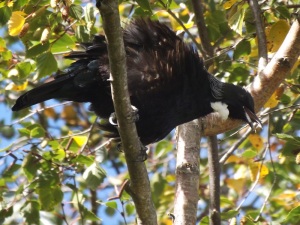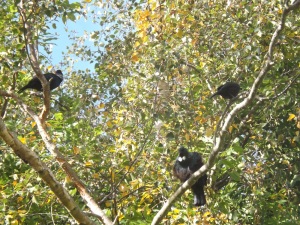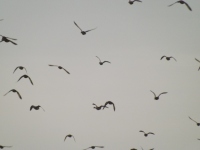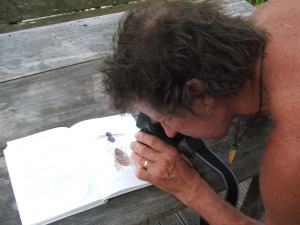A couple of weeks ago we noticed some new wasp-like insects, busily pollinating the Siberican Motherwort plants. They were marked just like wasps, but flew like bees, or hovered a bit, every now & then there would be a flurry as two larger bees fought, or a large one grabbed a smaller one.

Honey Bee (left) Wool Carder Bee (right)

Wool Carder Bee
We’ve discovered the best way to find out new things on google is to go to ‘Images’ to search, much quicker than trolling through loads of websites, so off we went in search of this rather alarming new visitor, and this is what we learnt:
These new insects are in the family Megachilidae: which includes Leafcutters & Mason Bees. They are Solitary Bees, not forming large colonies like the Honey Bee. The females are about half the size of the males, they have specialised rows of hairs on their legs, which they use to scrape ‘wool’ the downy fur from leaves like Woolly Lambsear. They carry this wool beneath their bodies, & use it to line their nests. The nests are found in disturbed habitats, cavities in rotting wood, & timber stacks etc.
The larger males are very territorial, attacking & chasing off any other pollinators from their patch, they also harrass the females, and “immobilise them, trying repeatedly to mate” not very endearing habits! Although they seem aggressive there does not seem to be any evidence that the Wool Carders are damaging our native bee populations or affecting the honey bees to any noticeable extent. The Wool Carders gather pollen from exotic plant species, with long tubular flowers, & have a preference for purple & blue flowers, although in our garden they were only found around the Leonurus sibericus flowers, which are pink. As yet we haven’t found any nests, but there is so much wilderness around the creek, they could be anywhere.
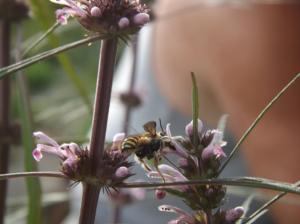

Our ports are our vulnerable spots for new species to enter NZ and these bees were first noted in 2006 in Napier & Nelson, since then they have spread out to over a dozen locations. I think in our garden since we stopped keeping bees, & the wild bees died from varroa, a much larger variety of pollinators are present in our gardens, this is reassuring in a way, that nature is filling the gap. We see far more Hover Flies, Drone Flies, Bumble Bees & Native Bees than we used to.
The other shift we’ve noticed over the last 5 years or so, is that we have less of the red & black spotted Ladybirds & more of the irridescent Steel Blue Ladybirds, this year a new arrival was the Yellow Shouldered Ladybird, which looks like a dusty blue bug, with big yellow spots, these were most often found feeding on the aphids at the top of the Swan Plants. They were impossible to photograph!!
It’s unsettling having new things arriving & wondering what these changes mean, & also missing old friends like the Magpie Moth & Cinnabar Moth, which used to be common in our gardens.















